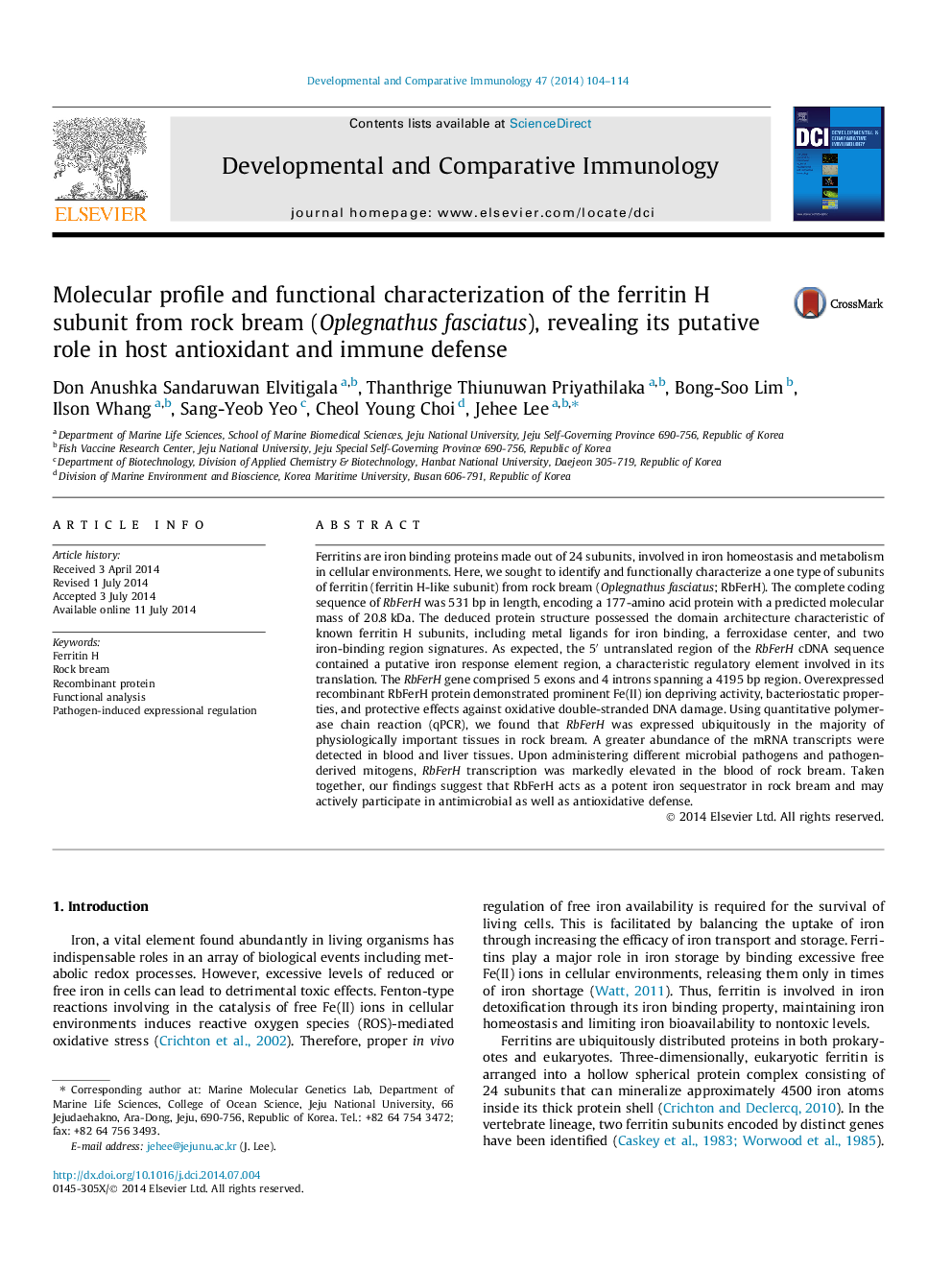| کد مقاله | کد نشریه | سال انتشار | مقاله انگلیسی | نسخه تمام متن |
|---|---|---|---|---|
| 2429115 | 1106478 | 2014 | 11 صفحه PDF | دانلود رایگان |

• A teleostan counter part of Ferritin H (RbFerH) was identified from rock bream.
• RbFerH resembled characteristics of typical vertebrate ferritin H subunits.
• Recombinant RbFerH demonstrated potent iron chelation properties.
• Recombinant RbFerH showed detectable protection against oxidative DNA damage.
• Upon pathogen and mitogen stimulations RbFerH transcription was modulated.
Ferritins are iron binding proteins made out of 24 subunits, involved in iron homeostasis and metabolism in cellular environments. Here, we sought to identify and functionally characterize a one type of subunits of ferritin (ferritin H-like subunit) from rock bream (Oplegnathus fasciatus; RbFerH). The complete coding sequence of RbFerH was 531 bp in length, encoding a 177-amino acid protein with a predicted molecular mass of 20.8 kDa. The deduced protein structure possessed the domain architecture characteristic of known ferritin H subunits, including metal ligands for iron binding, a ferroxidase center, and two iron-binding region signatures. As expected, the 5′ untranslated region of the RbFerH cDNA sequence contained a putative iron response element region, a characteristic regulatory element involved in its translation. The RbFerH gene comprised 5 exons and 4 introns spanning a 4195 bp region. Overexpressed recombinant RbFerH protein demonstrated prominent Fe(II) ion depriving activity, bacteriostatic properties, and protective effects against oxidative double-stranded DNA damage. Using quantitative polymerase chain reaction (qPCR), we found that RbFerH was expressed ubiquitously in the majority of physiologically important tissues in rock bream. A greater abundance of the mRNA transcripts were detected in blood and liver tissues. Upon administering different microbial pathogens and pathogen-derived mitogens, RbFerH transcription was markedly elevated in the blood of rock bream. Taken together, our findings suggest that RbFerH acts as a potent iron sequestrator in rock bream and may actively participate in antimicrobial as well as antioxidative defense.
Journal: Developmental & Comparative Immunology - Volume 47, Issue 1, November 2014, Pages 104–114